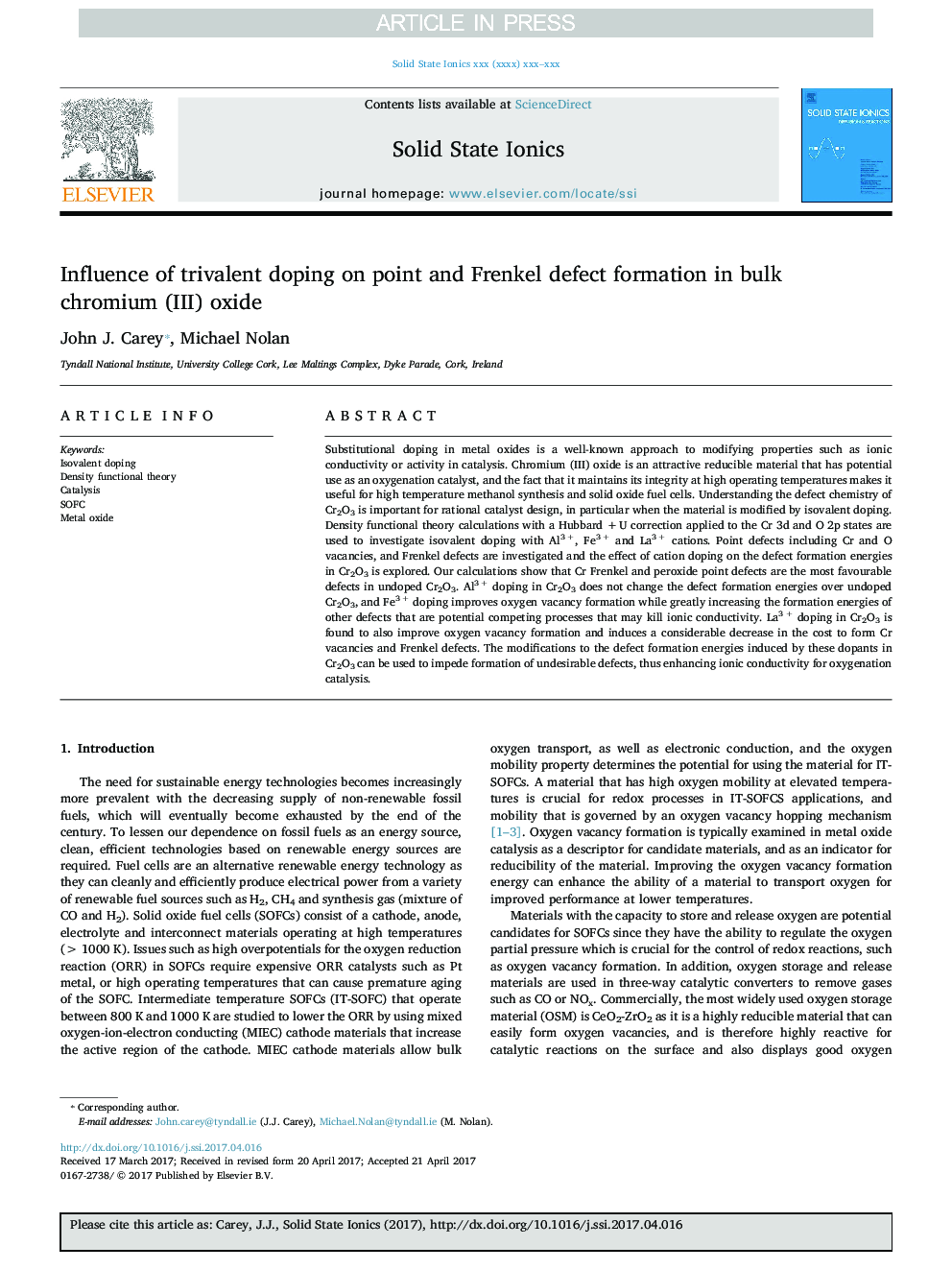| Article ID | Journal | Published Year | Pages | File Type |
|---|---|---|---|---|
| 5150361 | Solid State Ionics | 2017 | 14 Pages |
Abstract
Substitutional doping in metal oxides is a well-known approach to modifying properties such as ionic conductivity or activity in catalysis. Chromium (III) oxide is an attractive reducible material that has potential use as an oxygenation catalyst, and the fact that it maintains its integrity at high operating temperatures makes it useful for high temperature methanol synthesis and solid oxide fuel cells. Understanding the defect chemistry of Cr2O3 is important for rational catalyst design, in particular when the material is modified by isovalent doping. Density functional theory calculations with a Hubbard +Â U correction applied to the Cr 3d and O 2p states are used to investigate isovalent doping with Al3Â +, Fe3Â + and La3Â + cations. Point defects including Cr and O vacancies, and Frenkel defects are investigated and the effect of cation doping on the defect formation energies in Cr2O3 is explored. Our calculations show that Cr Frenkel and peroxide point defects are the most favourable defects in undoped Cr2O3. Al3Â + doping in Cr2O3 does not change the defect formation energies over undoped Cr2O3, and Fe3Â + doping improves oxygen vacancy formation while greatly increasing the formation energies of other defects that are potential competing processes that may kill ionic conductivity. La3Â + doping in Cr2O3 is found to also improve oxygen vacancy formation and induces a considerable decrease in the cost to form Cr vacancies and Frenkel defects. The modifications to the defect formation energies induced by these dopants in Cr2O3 can be used to impede formation of undesirable defects, thus enhancing ionic conductivity for oxygenation catalysis.
Related Topics
Physical Sciences and Engineering
Chemistry
Electrochemistry
Authors
John J. Carey, Michael Nolan,
